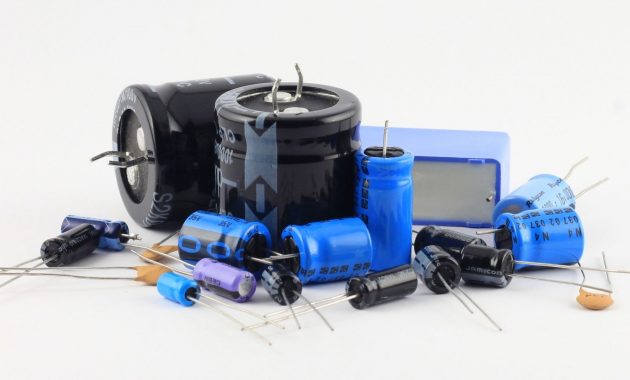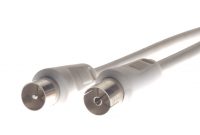How to check capacitors using multimeter? – Capacitors used in a variety of electronics circuits, but these components are usually the source of problems. Knowing how to inspect the capacitor with a multimeter is the simplest way to easily locate a faulty part and repair it.

We’ll show you how to recognize faulty elements using a simple but effective unit. Varieties of capacitors, as well as the method for testing them, are discussed in the article. You can quickly locate the “weak connection” in the electrical circuit if you follow our advice.
What is a capacitor?
A capacitor is an electrical energy storage system that operates in an electric field. It’s a two-terminal passive electronic component.
Capacitance is the term used to describe the effect of a capacitor. Although there is some capacitance between any two electrical conductors in close proximity in a circuit, a capacitor is a device that is specifically designed to add capacitance to a circuit. Originally, the capacitor was known as a condenser or condensator.
Capacitors of different types are produced in this industry and are used in a number of industries.
They are needed in the construction of automobiles and machines, radio engineering and electronics, instrument manufacturing, and the manufacture of household appliances.
When there are short-term power outages, capacitors function as a kind of energy “storehouse.” Furthermore, one form of these elements filters out useful signals and assigns the frequency of signal-generating devices.
The capacitor’s discharge-charging cycle is extremely fast.
The capacitor plates in an alternating current circuit are alternately recharged with the frequency of the flowing current.
This is due to the fact that the voltage at the terminals of the current source varies on a regular basis. Alternating current in the circuit is the product of such transformations.
A capacitor, like a resistor and a coil, displays resistance to an alternating current, although the resistance varies depending on the frequency of the current.
It may, for example, pass high-frequency currents while acting as a near-insulator for low-frequency currents.
The resistance of a capacitor is proportional to its capacitance and current frequency. The lower the capacitive resistance, the greater the last two parameters are.
Polar and non-polar varieties

There are two major types of capacitors among the enormous number available: polar (electrolytic) and non-polar. Paper, glass, and air are used as dielectrics in these devices.
Features of polar capacitors
They have polarity and are electrolytic, as the word “polar” implies. When you include them in the system, you must strictly adhere to the rules: “+” to “+” and “-” to “-.” If you ignore this rule, the item would not only stop working, but it may also explode. The electrolyte may be either a liquid or a solid.
Electrolyte-impregnated paper serves as the dielectric here. The elements’ capacitance varies from 0.1 to 100 thousand microfarads.
Heat is released as the plates come together. The electrolyte evaporates and explodes under its impact.
The top of modern capacitors has a slight indentation and a cross. The depressed part of the lid’s surface is thinner than the rest of the lid’s surface.
Its upper portion opens up like a rose during the blast. As a consequence, swelling at the ends of the defective element’s body is likely.
Differences in non-polar capacitors
Glass and ceramics are used as dielectrics in non-polar film components. They have a lower self-charge than electrolytic capacitors (leakage current). The fact that ceramics have a higher resistance than paper explains this.
The following are the general and special sections of all capacitors:
- High voltage. In high-voltage batteries, it’s used. They come in a variety of styles. Ceramic, film, gasoline, and vacuum explosive capacitors are all available. They are not interchangeable with ordinary pieces, and access to them is limited.
- Launchers are a form of launcher that is used in electric motors to keep them working smoothly. At startup, they increase the engine’s starting torque, for example, at a pumping station or a compressor.
- Pulsed. Designed to create a strong voltage surge and its transaction to the receiving panel of the device.
- Dosimetric. Designed to operate in circuits where the level of current loads is small. They have a very small self-discharge, high insulation resistance. Most often these are fluoroplastic elements
- Suppressing. They soften the electromagnetic background in a large frequency plug. They are characterized by insignificant intrinsic inductance, which makes it possible to raise the resonant frequency and expand the band of suppressed frequencies.
As voltage is exceeded above the average, the largest number of parts leave the working order in percentage terms. A failure can also be caused by a design flaw.
If the dielectric’s properties change, the capacitor can malfunction as well. When it flows out, dries, and cracks, this happens. Capacity moves in real time. Only measuring devices can be used to assess it.
The procedure for checking with a multimeter

Capacitors should be tested by removing them from the electrical circuit. As a result, you’ll be able to have more detailed indicators.
The passage of exclusively alternating current is the key property of all capacitors. A capacitor only passes direct current for a brief period of time at the start. The capacitance determines its resistance.
Polar capacitor inspection
When using a multimeter to check capacitors, the capacitance must be greater than 0.25 F.
The following is the capacitor measurement technology for troubleshooting with a multimeter:
- Take the legs of the capacitor and short-circuit them with a metal object, such as tweezers or a screwdriver. The aspect must be discharged, so this action is needed. The emergence of a spark attests to the fact that this occurred.
- Dial or test resistance with the multimeter switch.
- Touch the probes to the capacitor’s terminals, paying attention to the polarity: the red probe goes to the plus foot, and the black probe goes to the minus foot. Since a constant current is produced in this case, the capacitor resistance will become minimal over time.
The capacitor is charged when the probes are on the inputs, and its resistance continues to rise until it reaches a limit.
If upon contact with the probes the multimeter starts to squeak and the needle stops at zero, this indicates a short circuit. It became the cause of the malfunction of the capacitor. If immediately the arrow on the dial indicates 1, then an internal break has occurred in the capacitor.
Such capacitors are considered defective and must be replaced. If “1” is dIt is important to take measurements so that abnormal behavior does not affect the quality of the measurements. Do not touch the probes with your hands in the process. The human body has very low resistance, and the corresponding leakage rate exceeds it many times.
Current will follow the path of less resistance, bypassing the capacitor. Therefore, the multimeter will show the result, which has nothing to do with the capacitor. The capacitor can also be discharged using an incandescent lamp. In this case, the process will occur more smoothly.
A moment such as discharging a capacitor is mandatory, especially if the element is high voltage. They do this for security reasons and in order not to disable the multimeter. Residual voltage across the capacitor can damage it.
Non-Polar Capacitor Inspection
Check capacitors for Non-polar type, more easier to check using multimeter. First, the measurement limit is set to megaohms on the device. Next touch probes. If the resistance is less than 2 mega ohms, then the capacitor is most likely faulty.
When charging an element from a multimeter, it is possible to check its serviceability if the capacitance starts from 0.5 μF. If this parameter is less, the changes on the device are invisible. If it is nevertheless necessary to check an element less than 0.5 μF, then using a multimeter it is possible to do this, but only for a short circuit between the plates.
If it is necessary to examine a non-polar capacitor with a voltage of more than 400 V, this can be done if it is charged from a source protected from short-circuit. circuit breaker. In series with the capacitor, a resistor is connected, designed for a resistance of more than 100 ohms. Such a solution will limit the primary current surge.
There is also a method for determining the performance of a capacitor, such as a spark test. At the same time, it is charged to the working value of the capacity, then the output is short-circuited with a metal screwdriver having an insulated handle. Performance is judged by the strength of the discharge.
Immediately after charging and after some time, measure the voltage at the legs of the part. It is important that the charge lasts a long time. After you need to discharge the capacitor through the resistor through which it is charged.
Capacitor Capacitance Measurement
Capacitance is one of the key characteristics of a capacitor. It must be measured to ensure that the element accumulates and holds the charge well.
To make sure that the element is operational, it is necessary to measure this parameter and compare it with the one indicated on the case. Before checking any capacitor for operability, it is necessary to take into account some specifics of this procedure.
Trying to measure with probes may not produce the desired results. The only thing that can be done is to determine whether this capacitor is working or not. To do this, select the dialing mode and touch the probes of the legs.
Hearing a squeak, swap the probes, the sound should repeat. You can hear it with a capacitance of 0.1 μF. The larger this value, the longer the sound.
If you need accurate results, the best way out in this situation is to use a model that has special pads and the ability to adjust the plug to determine the capacity of the element.
The device is switched to the nominal value indicated on the capacitor housing. Insert the latter into the landing “nests”, after discharging it with a metal object.
The screen should display a value of capacity equal to approximately nominal. When this does not happen, they conclude that the item is damaged. Make sure that there is a new battery in the device. This will provide more accurate readings.
Multimeter voltage measurement

You can learn about the performance of the capacitor by measuring the voltage and comparing the result with the nominal value. To check, you need a power source. The voltage should be slightly less than that of the element being tested.
So, if the capacitor is 25 V, then a 9-volt source is enough. The probes are connected to the legs, taking into account the polarity, and wait a while – literally a few seconds.
It happens that the time is up, and the expired item is still operational, although it has different characteristics. In this case, it must be constantly monitored.
The multimeter is set to voltage measurement mode and performs a test. If almost immediately an identical value appears on the display, the element is suitable for further use. Otherwise, the capacitor will have to be replaced.
Check capacitors without evaporating
Capacitors cannot be taken off the board for testing. The only stipulation is that the board be switched off. Wait a while after de-energizing for the capacitors to discharge.
It is necessary to remember that achieving a 100 percent result without evaporating an aspect from the board is difficult. Nearby components obstruct complete validation. You can just make sure there isn’t a problem.
They simply contact the capacitor terminals with probes to test the resistance in order to verify the condition of the capacitor without soldering it.
The calculation of this parameter varies depending on the type of capacitor.
Capacitor Testing Recommendations

Condenser parts have one unpleasant property – when soldering after exposure to heat, they are very rarely restored. At the same time, you can qualitatively check an element only by dropping it from the circuit. Otherwise, elements nearby will shunt it. For this reason, some nuances should be taken into account.
After the tested capacitor is soldered into the circuit, the repaired device must be put into operation. This will provide an opportunity to follow his work. If its performance is restored or it begins to function better, the checked item is changed to a new one.
To shorten the test, not two, but only one of the terminals of the capacitor is soldered. You need to know that for most electrolytic cells this option is not suitable, which is associated with the structural features of the housing.
If the circuit is complex and includes a large number of capacitors, the fault is determined by measuring the voltage on them. If the parameter does not meet the requirements, the suspicious item must be removed and checked.
If faults are detected in the circuit, check the capacitor release date. The drying out of the element over 5 years of operation is on average about 65%. Such a part, even if it is in working condition, is best replaced. Otherwise, it will distort the operation of the circuit.
For next-generation multimeters, the maximum measurement is capacitance up to 200 uF. If this value is exceeded, the control device may fail, although it is equipped with a fuse. The latest generation equipment contains smd ( Small Micro Device) electro capacitors. They are very small in size.
Soldering one of the element’s assumptions is extremely difficult. It is preferable to either lift one terminal after de-soldering to isolate it from the rest of the circuit, or to disconnect both terminals.
Despite the fact that this is not a highly advanced system with limited capabilities, it is sufficient for the inspection and repair of a wide range of common electronic devices.
Please leave comments, upload pictures, and ask questions about the article’s subject in the box below. Tell us about the process of determining the operability of capacitors. Share details that would be beneficial to site users.


